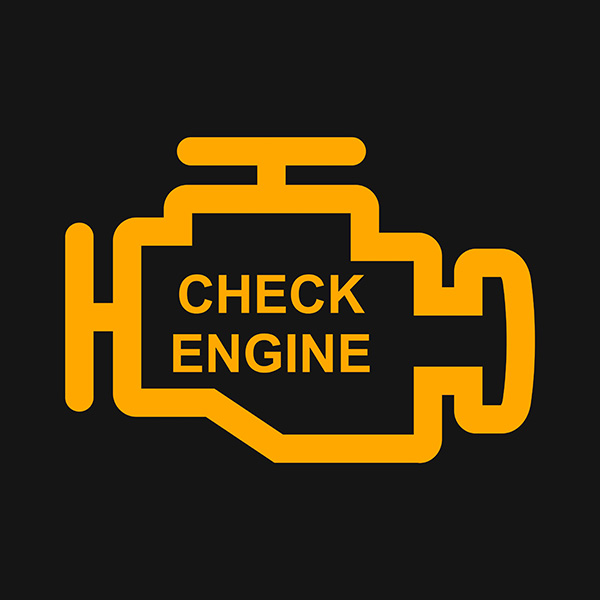
Seeing the check engine light appear on your dashboard can be unsettling. For some drivers, it creates instant anxiety. For others, it’s more of an afterthought—just another light to ignore until something feels wrong. But what does that light really mean, and is it ever safe to keep driving with it on?
The answer depends on what triggered the warning and how your vehicle is behaving. Let’s break down what the check engine light indicates and when it becomes an urgent problem.
What the Check Engine Light Means
The check engine light, part of your vehicle’s onboard diagnostic system (OBD-II), is designed to alert you when something goes wrong with the engine, emissions, or other related systems. It could signal anything from a loose gas cap to a serious engine misfire.
Modern vehicles are equipped with dozens of sensors that constantly monitor engine performance, exhaust emissions, fuel usage, and more. When something falls outside of expected parameters, your car’s computer logs a fault code and illuminates the check engine light.
That doesn’t always mean your car is about to break down, but it does mean something isn’t operating as it should.
Solid vs. Flashing: Why It Matters
The way the check engine light behaves is a big clue about the severity of the issue.
If the light is solid, the problem is likely non-urgent, though it still needs attention. You might have a faulty sensor, small emissions issue, or worn component that isn’t causing immediate damage but could affect performance or fuel economy.
If the light is flashing, that’s a different story. A flashing check engine light typically indicates a severe engine misfire that could damage the catalytic converter or other critical components. In this case, continuing to drive can quickly lead to more expensive repairs.
Regardless of how the light is behaving, it’s best to have your vehicle checked as soon as possible to avoid further complications.
Common Causes of a Check Engine Light
Some issues that trigger the check engine light are relatively minor. Others can lead to major engine trouble. Here are some of the most common culprits:
- Loose or missing gas cap: This simple issue affects fuel vapor containment and emissions. It’s one of the most frequent and easiest to fix.
- Faulty oxygen sensor: These sensors help manage the air-fuel mixture. A bad one can decrease fuel efficiency and increase emissions.
- Worn spark plugs or ignition coils: These can cause engine misfires, rough running, or poor acceleration.
- Catalytic converter problems: A failing converter can increase emissions and affect performance.
- Mass airflow (MAF) sensor failure: This sensor measures incoming air and helps manage fuel delivery.
- Vacuum leaks: Small cracks or disconnections in hoses can throw off the air-fuel balance.
Some problems may not be noticeable to the driver immediately, which is why paying attention to the light is crucial.
How Long Can You Drive With It On
There’s no one-size-fits-all answer to how long you can safely drive with the check engine light on. If the light is solid and your car is running normally, you will be able to drive for a short time, but only to reach the repair shop.
However, if you notice rough idling, loss of power, unusual noises, or decreased fuel economy, continuing to drive could easily worsen the issue. And again, if the light is flashing, you should pull over and turn off the engine as soon as it’s safe.
Driving for days or weeks with an active check engine light can lead to further damage, poor performance, and higher repair costs.
What You Should Do When the Light Comes On
The first step is to stay calm and pay attention to how the vehicle is behaving. If it still drives normally and the light remains solid, check the gas cap to ensure it’s tight. Sometimes, that’s all it takes.
Next, schedule a diagnostic inspection. Our technicians use a scan tool to read the stored fault codes, which point to the source of the issue. In many cases, the problem can be identified quickly and resolved with a minor repair.
Ignoring the light won’t make it go away—it will only delay the inevitable and potentially cause more damage over time.
Don’t Ignore the Warning: Visit Kaufman’s Auto Repairs in Sarasota, FL
At Kaufman’s Auto Repairs in Sarasota, FL, we know how frustrating a check engine light can be. Our experienced technicians utilize advanced diagnostic equipment to read trouble codes, identify the root cause of the issue, and clearly and honestly explain your repair options.
Whether your car needs a simple fix or more extensive diagnostics, we’re here to help you resolve the problem before it escalates. If your check engine light just came on, or has been on for a while—schedule a visit with us today and get back on the road with peace of mind.